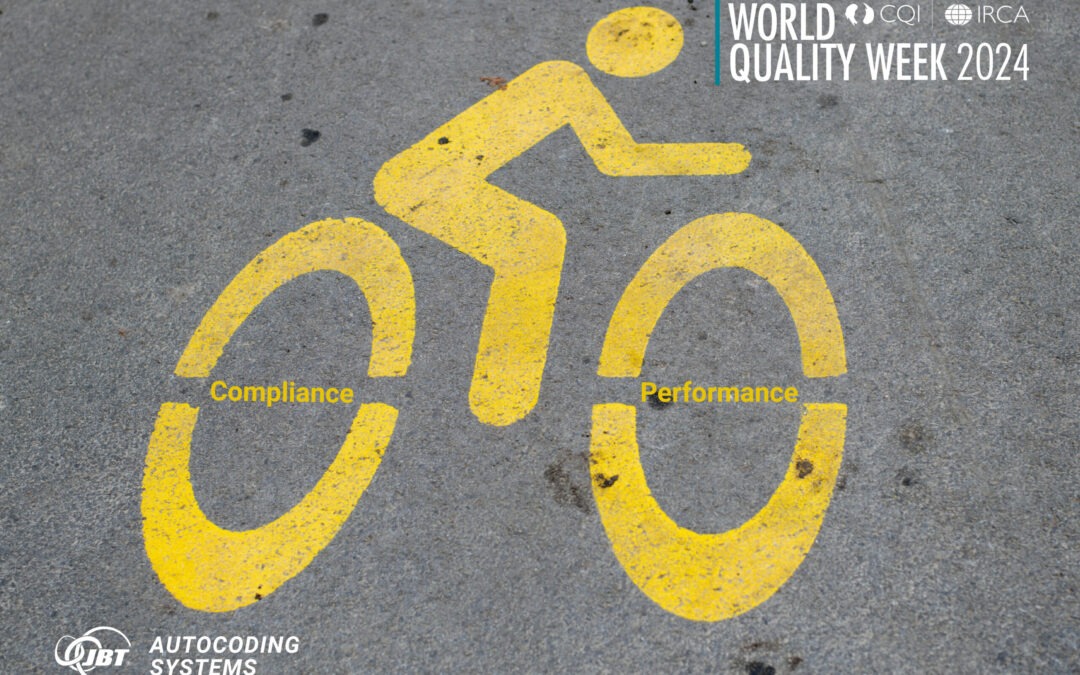Packaging quality guru
If you’re responsible for the packaging of goods, you’ll know the importance of quality control and assurance to maintain product standards. Many retailers in the UK and Australia have long established a code of practice that defines the framework within which their suppliers are expected to work. That’s why there is a dynamic pathway for every packaging quality professional as they embark on their journey with retailers, and why reminders such as World Quality Week help to reinforce the role that quality plays in strengthening the knowledge of any aspiring packaging quality guru.
Staying ahead
The theme of this year’s #WorldQualityWeek, which takes place from 11-15 November, is ‘compliance to performance’ in quality management. It’s about promoting the power of quality to innovate and stay ahead of internal and external change by increasing the focus on performance. Retailers can rely on you if you are compliant, but will favour those who are committed to performance and continuous improvement.
In an environment as demanding as the 24/7 food and beverage manufacturing industry, packaging compliance is a way to drive high product standards. They are often linked to learning and improving initiatives to maximise profit and achieve sustainability goals such as minimising waste. In areas such as product packaging and labelling, retailers have worked with many partners over the years to understand how control systems work and which ones work best. These are often set out in their manufacturing standards, which represent what the industry considers to be best practice.
Packaging compliance
CONTROL
If you’ve ever been involved in food and beverage manufacturing standards, you’ll be familiar with the term ‘automated packaging control system’ or ‘automated packaging verification and date coding’. That’s essentially how we at JBT AutoCoding Systems started as a business by focusing on these core principles and adapting, tailoring and designing our products and services to meet changing customer needs and retailer standards.
With more temporary workers on board, frequent product changes due to private labelling and constant changes to product packaging, risk management will be at the forefront of your mind to protect your company’s brand reputation and standards. By automating your packaging verification and date coding processes, the use of incorrect labels or codes due to human error is greatly reduced, radically minimising the risk of a product recall. Your wider teams will recognise your role in protecting the business from damaging quality incidents and packaging failures.
Packaging performance
DATA ACQUISITION
Whether you adopt an automated packaging verification and date coding system, such as our AutoCoding System, depends on whether you see it as a tactical lever to win more work or whether you value quality process improvements. Either way, we help you grow by enabling you to automate workflow control, optimise efficiency and extract useful data from our intimate line integration with connected equipment.
With our paperless quality, inspection reporting and line performance reporting modules, we can capture data to help you to benchmark and review your packaging performance. It supports your wider functional teams who are also heavily impacted by factory equipment, processes and changing operator roles.
DATA REPORTING
How you use this data depends on whether your culture is at the right level of maturity to move from ‘compliance’ to ‘performance’. As more and more frontline workers are connected to remote devices, there is greater opportunity to use reporting tools to your advantage and improve operational governance.
Our paperless quality, inspection reporting and line performance reporting modules can help you and your wider functional teams reach new heights of continuous improvement by measuring performance and highlighting issues on the factory floor. Reported performance data, unlike other tools on the market, includes both elements of contextualised* product and factory information.
This is extremely useful for engineering, maintenance and overall factory management teams to gain a more insightful view of factory situations and avoid excessive disruption to packaging production. Reporting tools can be fully owned by different departments to increase accountability and responsibility for prompt action.
DATA VISUALISATION
Finally, we often try to tailor our data visualisation to help you make quick decisions on the factory floor. It may be a visualisation worth sharing with wider members of the organisation for live, up-to-the-minute events and value-added insights. Selective data reporting and visualisation to employees and factory headquarters can improve stakeholder relationships, build trust, foster a culture of quality with greater product assurance and confidence in delivery at higher capacity without packaging or date code errors.
This increasingly collaborative approach, combined with technology-enabled reporting and data visualisation, can only enhance the transparency of the progress of your customers’ orders, which often translates into greater confidence and, most importantly, customer satisfaction.
Are you committed to getting quality right? If you would like to find out more about our reporting and visualisation tools to support performance, please request a demonstration. If you have any comments or would like more information, please contact us.
Contextual information



